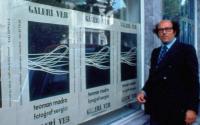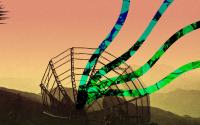19 April 2006Richard Lloyd Parry
Japanese scientists displayed yesterday the oldest samples of ice yet retrieved, which promise to reveal invaluable data about the Earth's climate a million years ago.
The ice "cores" were removed over the course of two years by scientists at the Dome Fuji base, in the eastern Antarctic, who drilled down 3km (2 miles) into the ancient ice.
| NI_MPU('middle'); |
"The ice core is made up of snow that fell in the distant past," said Hideaki Motoyama, the project's leader, from the National Institute of Polar Research. "You can use it to examine changes in temperature, levels of carbon dioxide and methane over time, information that is only available from the core."
The ice cores were displayed at minus 20C (-4F). The samples were harvested in January and transported back to Japan. They are likely to confirm what previous samples of younger Antarctic ice have suggested — that concentrations of carbon dioxide and methane are higher now than at any time in the past 650,000 years.
Mr Motoyama hopes that they may also contain traces of microscopic life. "The environment there is very harsh, with temperatures about minus 45C, so we don't know if life can be sustained," he said. "But we believe we will find organisms."
Ice cores are collected by drilling into ancient ice with a hollow tube. They are a rich source of information about the Earth's climate in the past. Fallen snow preserves dust, ash, bubbles of atmospheric gas and even radioactive elements; a richer source of climatic information than tree rings or layers of sediment.






